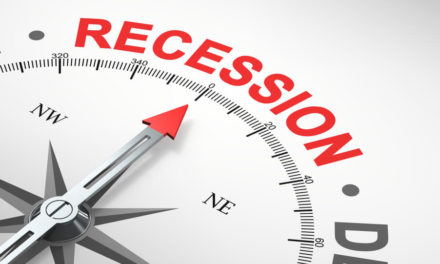Far too many investors ignore dividends, especially in a bull market. It’s easy to see why: With stocks racking up yearly double-digit gains, it’s tough to get worked up about a sub-2% payout (which is what most S&P 500 names pay).
But a crisis flips the script, making safe cash dividends a lot more attractive. And luckily for us, there’s one ignored corner of the market where we can grab payouts that triple what the typical stock dribbles out.
That would be in municipal bonds, or “munis,” for short. They’re a kind of debt instrument issued by local governments throughout the US. The best thing about them is their high, steady dividends, with yields of 5%, 6% or even 7%. Plus, these payouts are tax-free for most Americans. That drives your “true” yield even higher — possibly to 8% and up (depending on your tax bracket)!
For most folks, an outsized tax-free dividend would be very welcome right now. Let’s talk about how we’re going to get it.
Muni Myths Debunked
Before we get to the three specific investments I have for you today, let’s discuss one worry you might have about munis: that local governments could default as the COVID-19 crisis saps their tax revenue.
The facts are more comforting. Fewer than 0.01% of municipal bonds default, and the ones that do are usually restructured so investors only lose 20% or less of their capital. And the three funds we’ll discuss below hold hundreds of bonds, so you can think of the risk in these funds being more or less capped at 0.002% of your invested capital.
It doesn’t get much safer than that.
Except, actually, it does. The Federal Reserve has announced it will begin buying munis, effectively putting a floor under these bonds.
3 Muni Funds Yielding 6-Plus Percent
When it comes to buying munis, you’re best to do so through a closed-end fund (CEF) because you’ll get instant diversification, experienced management (a must for navigating this corner of the market) and, most importantly, those high yields we just talked about.
Muni-bond ETFs just can’t compete: The benchmark iShares National Muni Bond ETF (MUB), for example, yields a meager 2.3%, while CEFs triple that — and that’s before factoring in muni-bond CEFs’ tax-free benefits.
Let’s start with the highest yielder among our trio, the Guggenheim Taxable Municipal Managed Duration Fund (GBAB), which pays a hefty 6.8% and protects your capital better than stocks: It’s almost fully recovered from the COVID-19 panic selloff, and as you can see below, it didn’t fall nearly as far as the market in the March plunge:
You Can’t Keep a Good Dividend Payer Down
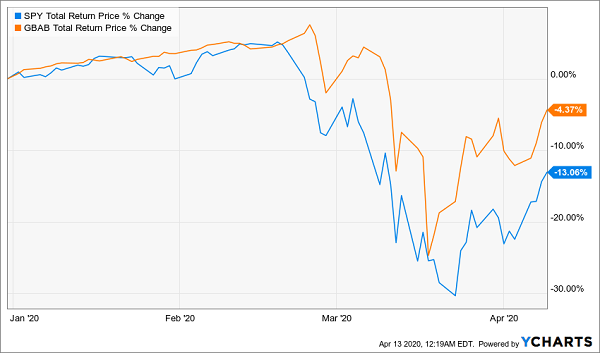
This is due in large part to GBAB’s portfolio, which holds bonds from across the US.
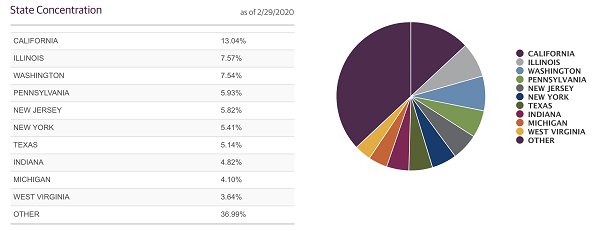
Source: Guggenheim Investments
Our next fund, the 5.8%-yielding BlackRock Taxable Municipal Bond Fund (BBN) uses a similar strategy as GBAB, but it’s also worth holding because of its strong historical performance, having slightly outrun BBN over the long haul, while both CEFs have soundly beaten the index fund.
Another Muni CEF Roars Ahead
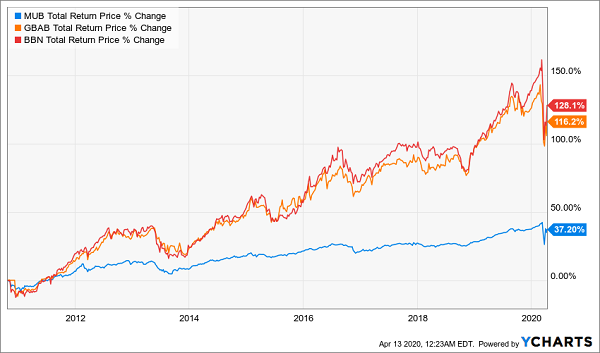
With BBN and GBAB in your portfolio, you could rebalance between the two while collecting income from both. And then you could round off your muni holdings with the Nuveen Municipal High Income Opportunities Fund (NMZ).
The great thing about NMZ is that it has a long history, being over a decade old, and it has crushed the index for years.
NMZ Ahead of the Pack
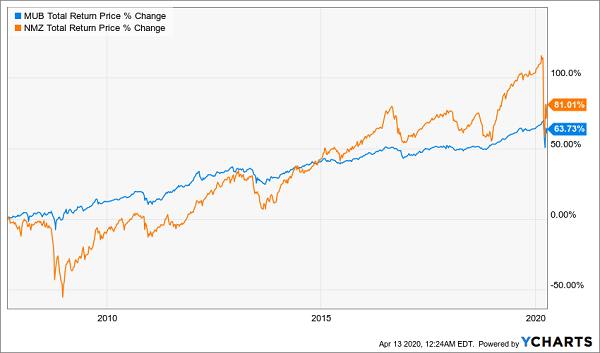
This outperformance comes while NMZ yields a nice 5.7%, which is equivalent to 8% or even 9%, depending on your tax bracket.
These are just three examples of the diversification, stability and income you can get from muni-bond CEFs, making them strong additions to your portfolio during a crisis like this one.
To learn more about generating monthly dividends as high as 8%, click here.


